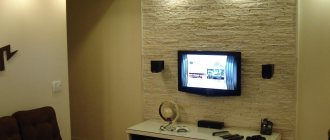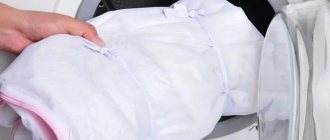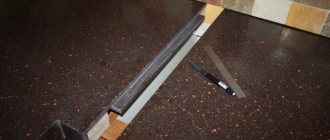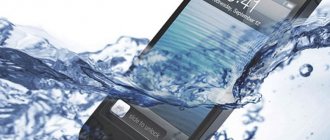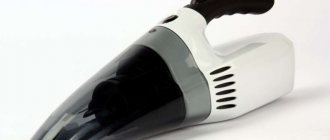Preparing surfaces before laying artificial stone
Before laying the facing material, it is necessary to prepare the surface. The wall must be perfectly flat and strong. In addition, it will have to be freed from any contaminants, including fat. The wall will need to be dried, since moisture reduces the adhesion of the adhesive.
The texture and quality of the surface of the outer or inner wall for cladding with decorative stone does not matter. This material can be quite successfully attached to a permanent support or thermal insulation materials, such as:
- surface covered with paint,
- plastered surface,
- single or multi-layer cladding,
- aerated concrete block,
- concrete wall,
- silicate brick,
- masonry made of ordinary or ceramic bricks,
- hollow concrete, brick or pumice concrete,
- tree,
- expanded polystyrene (insulation),
- plasterboard or gypsum panel,
- chipboard panel.
Choosing the right adhesive
When attaching tile materials and decorative tiles, you should use one of two types of glue based on components such as gypsum or cement.
Ceresit SM-11 glue is popular. To create cladding on the street, as a rule, brands Sm-17 or 117 are chosen. The glue label usually describes how to use it correctly, whether it is suitable for interior or exterior decoration. But the variety for outdoor work has a significantly higher price.
Adhesives from the manufacturers Perlfix and Knauf are in great demand. They are used both for laying decorative stone from gypsum and other materials. You can also pay attention to the products of other equally well-known brands. But you should not choose materials at very low prices, as they often turn out to be of poor quality.
Laying on a painted surface
In order to install decorative stone on a painted surface, all paint will have to be removed with a wire brush. You can use a sandblasting machine to speed up and facilitate the process. After this, the surface is checked for flaws and plastered. You should be especially careful with old, crumbling plasters. Next, you should sand the newly plastered areas, as well as the structured surface that the old plaster has. After this, the entire area:
- cleaned with a dry brush,
- washed with water
- dries well.
If the paint or putty cannot be removed, nail a special plaster mesh to the wall.
How to glue decorative stone: rules and nuances in cladding, advice from experts
Author: Olga Bilovitskaya · Published 11/04/2018 · Updated 11/04/2018
Modern people can choose from a huge number of materials suitable for price, quality, design and style when carrying out repairs and finishing work. Decorative stone helps create beautiful facades that make the exterior of a building aesthetically attractive. It can be used with the same efficiency inside buildings. To achieve this, you need to know how to glue decorative stone correctly. In order for the finish to serve for a long time, you need to follow a certain technology. But first things first.
Laying on a plastered surface
When starting to lay artificial stone on a plastered surface, it must first be leveled. This is done by plastering.
It is recommended to put a special metal plaster mesh on the wall if the leveling layer does not exceed 2 cm. It is advisable to use a galvanized mesh if finishing with light tiles is to be done.
If there is old plaster on the wall, it is necessary to evaluate its actual condition. If it is unsatisfactory, the plaster will have to be removed. Plastered and highly structured surfaces must be thoroughly cleaned and sanded. Next comes surface treatment using a deep penetration primer. No earlier than 2 hours later you can start working, allowing the treated surface to dry thoroughly.
Installation of decorative tiles: stages
You can learn how to glue artificial stone from the detailed instructions, which include the following basic steps:
- Application of adhesive composition.
- Laying the material.
- Rustication.
- Coating with a protective layer.
Each of the listed stages must be given special attention and performed with the highest possible quality in accordance with technical standards and requirements. It is worth considering each of them in more detail.
Installation on a concrete wall
Before facing, concrete walls must stand for at least 6 months for final shrinkage. Solid-cast facade concrete or foundation blocks do not require additional processing, since the wall and facing stone have equal physical properties. The facing tiles are laid with a special adhesive. There is no need for additional fasteners. Brickwork made from:
- cinder block,
- sand-lime brick,
- foam-gas concrete blocks.
Installation on wooden surfaces
If you are going to lay artificial stone on a wooden surface, you must first install a waterproofing material. This can be glassine, roofing felt or other moisture-proof construction paper. This way the tree is protected from rotting. In addition, the glue, which is destroyed by the action of polysaccharides contained in the wood, will also be preserved. The paper is laid in horizontal rows. The final top row is overlapped by 4 cm, and on vertical seams this overlap increases to 8 cm.
After completing the installation of waterproofing, use galvanized nails or staples to secure the plaster mesh to the surface. It must have a protective anti-corrosion layer. The vertical distance between the fasteners is 10-15 cm, and the horizontal distance is 35-40 cm. The mesh on corner surfaces, internal and external, is mounted in two layers. A layer of plaster mortar 1 cm thick is applied on top of it. Allow the plastered walls to dry thoroughly before installing the tiles.
Similar work is carried out in the presence of facade bases:
- metal,
- asbestos-cement,
- plastic,
- glass.
Their physical properties are different from concrete.
Laying on polystyrene foam
In recent years, great attention has been paid to energy-saving building technologies. These include external wall insulation, followed by finishing. Expanded polystyrene, a popular modern insulation material, is fixed to the wall using “fungi” - special plastic dowels with a pitch of 35-40 cm. The mushrooms have steel cores. The plaster mesh is pressed against the polystyrene foam with the same dowels. The mesh is plastered with a special mixture intended specifically for polystyrene foam.
Attention! If installation of facing materials higher than 70 cm in height is required, the plaster mesh should be secured additionally!
Laying on chipboards
Only waterproof chipboards are suitable as a base for cladding made with thin bricks. To avoid twisting of the plate, it is necessary to secure it firmly. Highly adhesive and highly elastic adhesives are used in the cladding. It is highly desirable to fix the reinforcing mesh on the surface of the sheet.
Upon completion of installation
According to building codes, façade finishing materials must be coated with hydrophobic compounds. These are special water-repellent impregnations that:
- reduce the level of moisture absorption,
- increase frost resistance and thermal protection efficiency,
- protect against the appearance of “efflorescence” - ugly white spots.
Protective liquids and varnishes must be gas-permeable. Otherwise, the atmosphere in the room cannot be called comfortable. This also affects the duration and strength of the adhesive attachment to the wall of the decorative stone. Silicone water repellent successfully solves these problems. With its help, a semi-permeable elastic membrane is created on the surface being treated. The coating is not destroyed by house movements. It:
- repels water
- protects against the effects of acid rain,
- protects against exposure to solar radiation.
This protection is necessary in case of sweating, temperature changes, and other unfavorable phenomena that can spoil or contaminate the installed cladding. When installing stone in places of particular contamination or the presence of particularly unfavorable influences, such treatment of the cladding is mandatory. The surface treated with a water-repellent agent acquires a rich color and is easy to clean. This will make subsequent care easier.
How to store products
Products must be stored indoors:
- closed,
- dry,
- not frozen, preferably heated.
Make sure that the ambient temperature when storing products does not exceed +10°C, and humidity - up to 70%. Professional recommendations for installation The use of materials specially designed for installation of artificial stone and thin-walled facing bricks is required.
This:
- glue,
- jointing,
- water repellent.
When working with consumables (adhesives, grouts, water repellents, etc.), follow the attached instructions for their use. Adhesives used for installation work should be used at surface temperatures of + 5ºC and above.
Summing up
Liquid nail glue can be used for all kinds of materials. It can be either foam or light plastic, or concrete. It is important to give preference to the appropriate manufacturer and type of product. When choosing glue, pay attention to where the work will be carried out, since not all such products are suitable for working outside the building, especially at air temperatures below zero.
Liquid nails are one of the simplest installation methods, which eliminates unnecessary holes and work with other tools, such as a drill. At the same time, the aesthetic appearance of the processed material does not change in any way.
Start of installation work
Mix the artificial stone intended for cladding from at least 5-10 boxes before starting work. Lay it out on a horizontal surface so you can see the future masonry pattern. These manipulations will help you successfully group them by size and color to select individual elements. Use a “grinder” - an angle grinder equipped with a stone disc, if there is a need to adjust the stones to the size of the elements.
Attention! Pay attention to whether the so-called “cement laitance” is present on the back side of the facing material - a thin foamy layer, up to 0.5 mm thick. If there is such a layer, it must be cleaned with a stiff metal brush.
Before starting installation, it is recommended to moisten the installation surface of the artificial stone, as well as the working side of the tiles, using a paint brush. Lay from top to bottom, starting from the first tile in any corner of the room where, according to your calculations, the first uncut tile should be located. This way, you can prevent glue from getting on the laid rows of tiles.
Begin installation by installing corner elements. Next, alternate the sides of the corners - short and long. Carry out the work as indicated above - from top to bottom.
If laying artificial stone involves jointing, be sure to observe the width of the gap between the stones. Remember: for different textures of the facing material, a stone tempering is established, taking into account the joint width recommended by the standards.
Attention! Recalculation of the amount of required material will require installation options that provide for a different width of the masonry joint.
